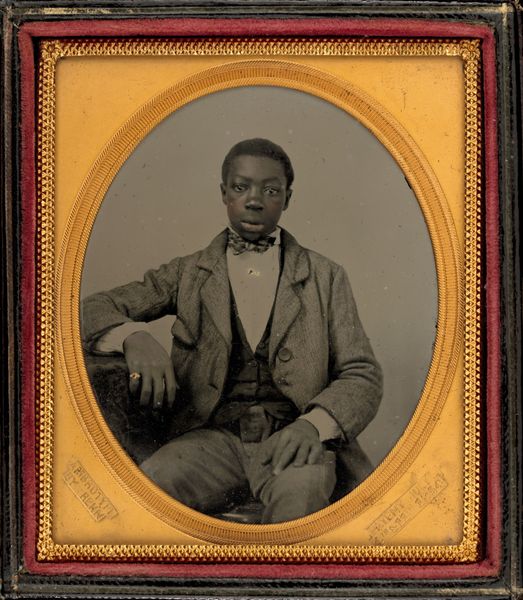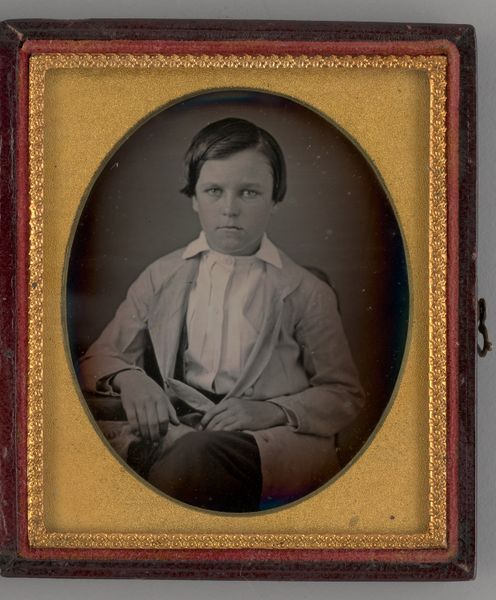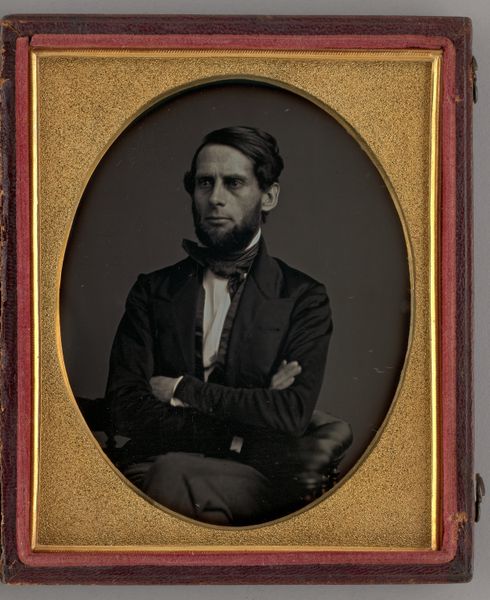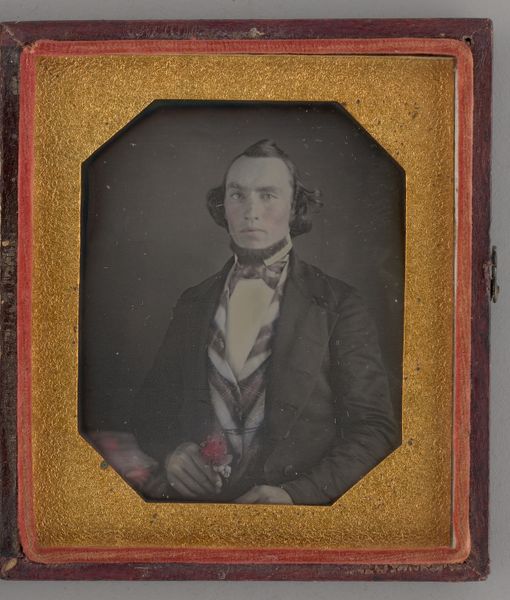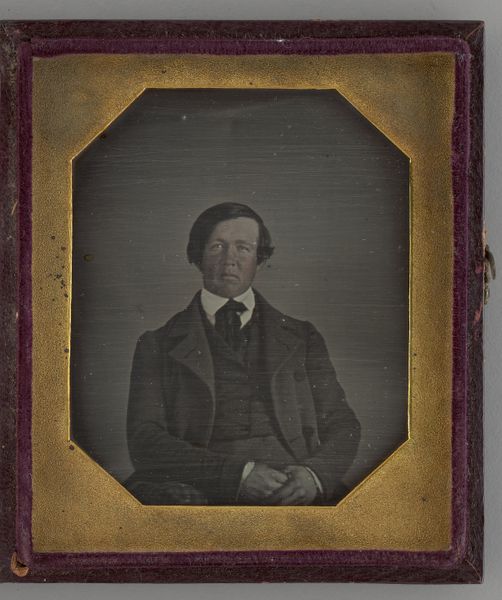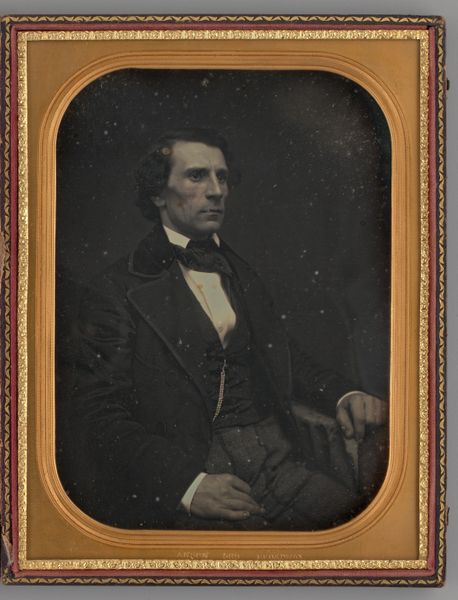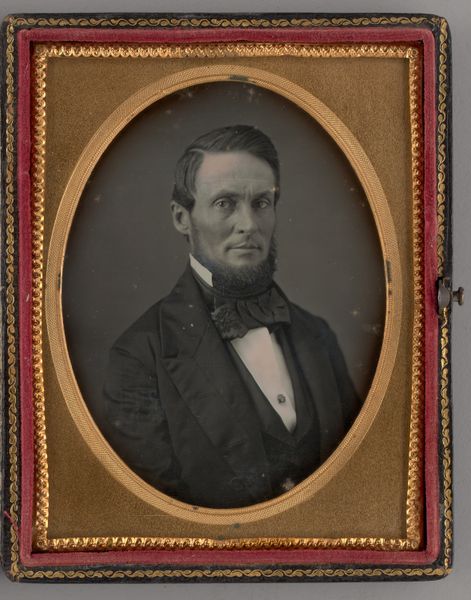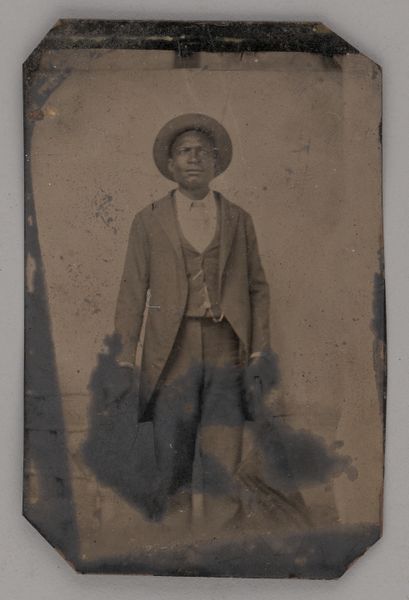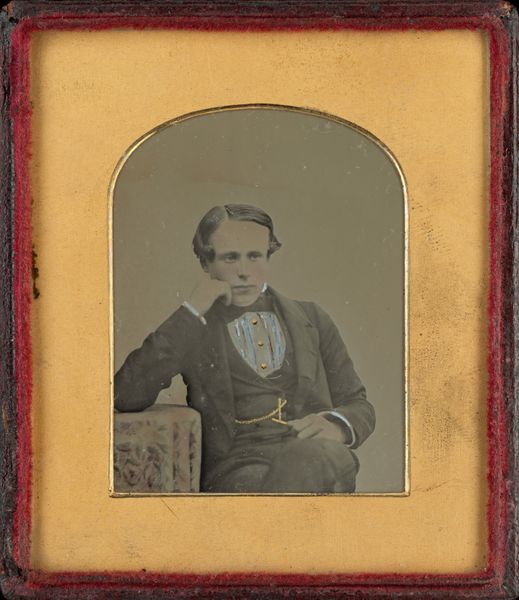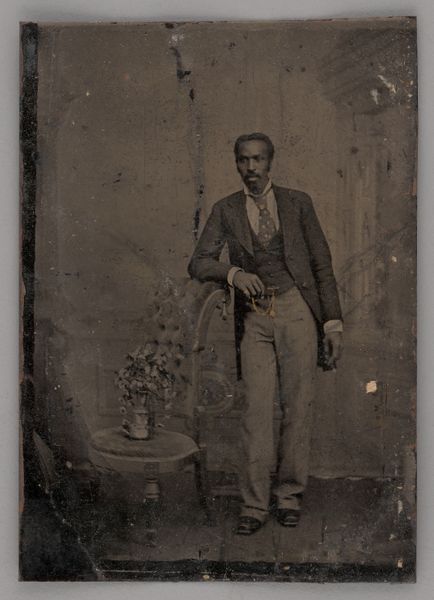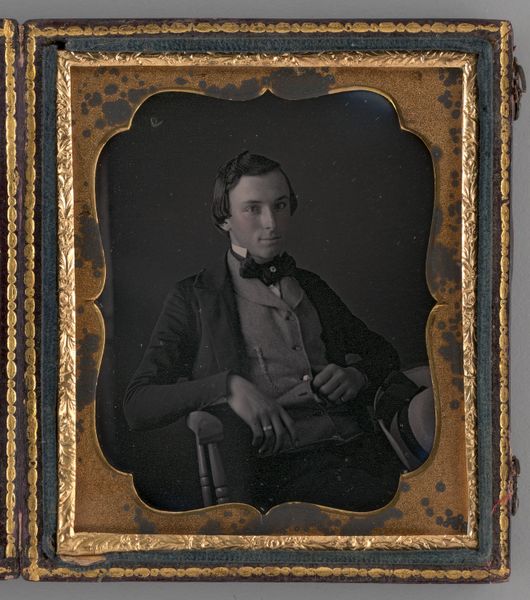
daguerreotype, photography
#
portrait
#
antique
#
greek-and-roman-art
#
daguerreotype
#
photography
#
coloured pencil
#
19th century
Dimensions: image (visible): 6.7 × 5.5 cm (2 5/8 × 2 3/16 in.) mat: 8.1 × 6.9 cm (3 3/16 × 2 11/16 in.) case (closed): 9.2 × 8 × 1.7 cm (3 5/8 × 3 1/8 × 11/16 in.)
Copyright: National Gallery of Art: CC0 1.0
Editor: We're looking at a daguerreotype from around 1850, a portrait of a man by John Plumbe Jr. It has a striking formality. He looks directly at us, almost challenging the viewer. What do you see in this piece? Curator: The direct gaze is definitely key. Early photography carried tremendous weight; each image was precious. Think about it: for perhaps the first time, people outside the elite could have their likeness preserved. What this man chooses to convey through his pose, clothing—the ring on his finger—all of these become potent symbols of identity and aspiration. Consider also the rarity of images of Black individuals at this time. This portrait becomes a powerful act of self-representation. Does it evoke anything familiar for you? Editor: I hadn't thought about it that way. It’s almost defiant, that gaze, like he's reclaiming his image. I initially saw just a formal portrait, but now I see the assertion of identity. Curator: Precisely. The formality acts almost as armor, doesn't it? It speaks volumes about how one had to present oneself to be seen and respected, particularly against a backdrop of societal prejudice. How do you feel about this relationship between personal identity and social pressures that the portrait captures? Editor: I think it's interesting how it still resonates today. We're still dealing with image and representation. Thanks. I definitely see more complexity now. Curator: And I hope that understanding how cultural memory resides within these images, helps you to recognize the power they continue to hold.
Comments
No comments
Be the first to comment and join the conversation on the ultimate creative platform.
